A hook on a pulley for some sort of crane or something. Based on dimensions given in an old, undated book from Spain of technical drawing exercises.
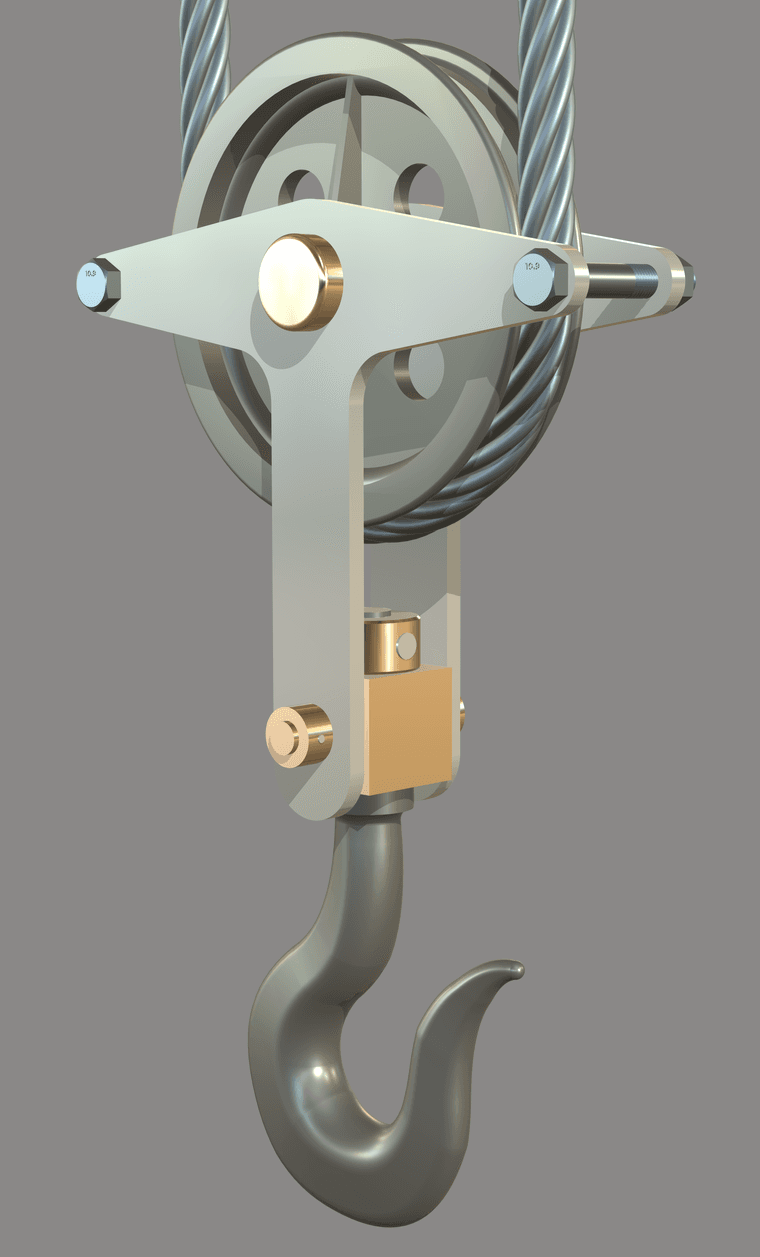
A hook on a pulley for some sort of crane or something. Based on dimensions given in an old, undated book from Spain of technical drawing exercises.

This is a heel strap for a wheelchair to prevent the user's feet from sliding off the foot plate. It's designed to install easily with no tools required except scissors to trim the strap to length. The clips with snap on covers are 3D printed to fit off the shelf polyurethane toothed belting.
From the SketchUp model.
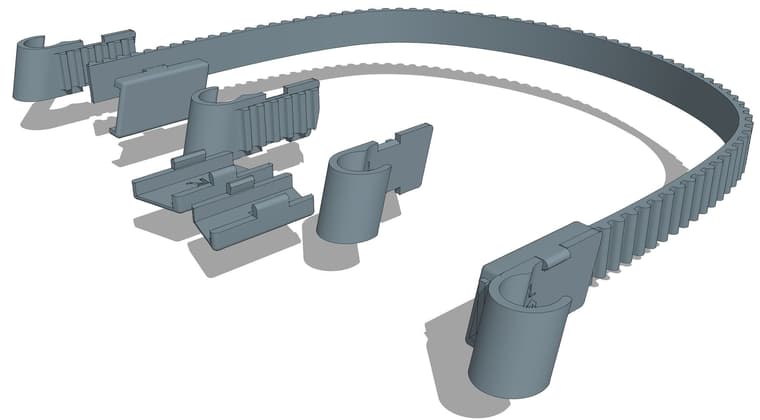
Partially assembled.
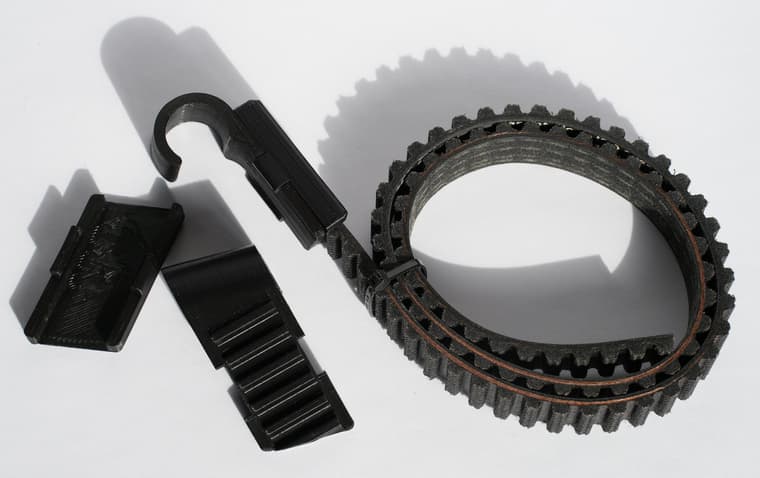
Temporarily installed on a chair. Ignore the dog hair.
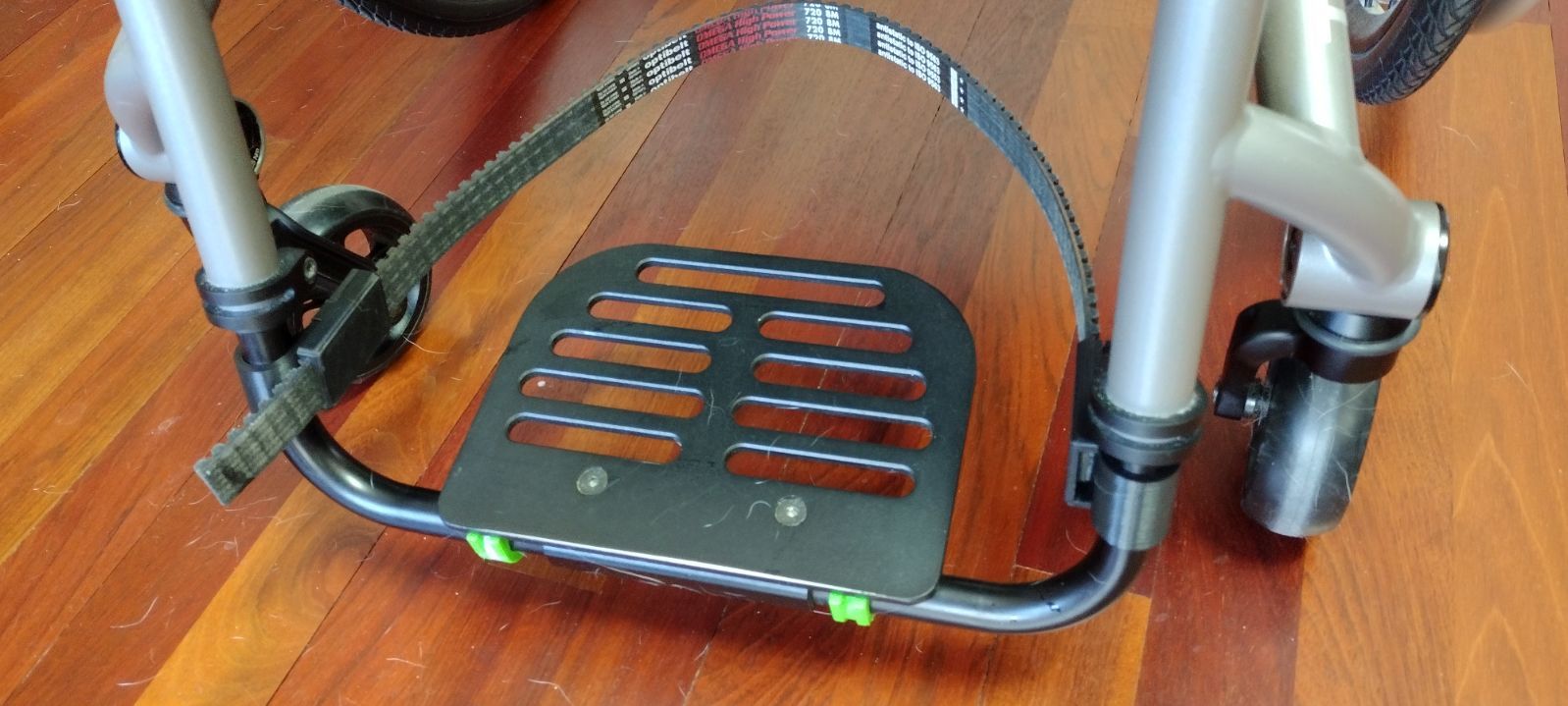
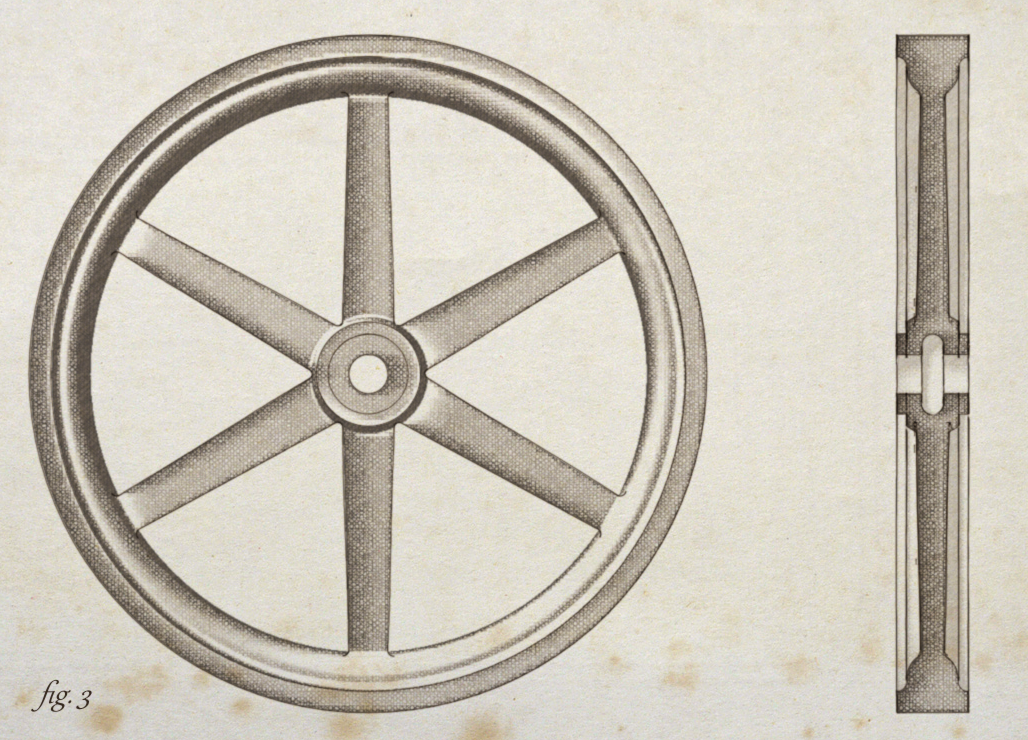
Experimenting with creating a vintage illustration style for my SketchUp models. The flywheel is based on dimensioned drawings in a textbook from 1897.
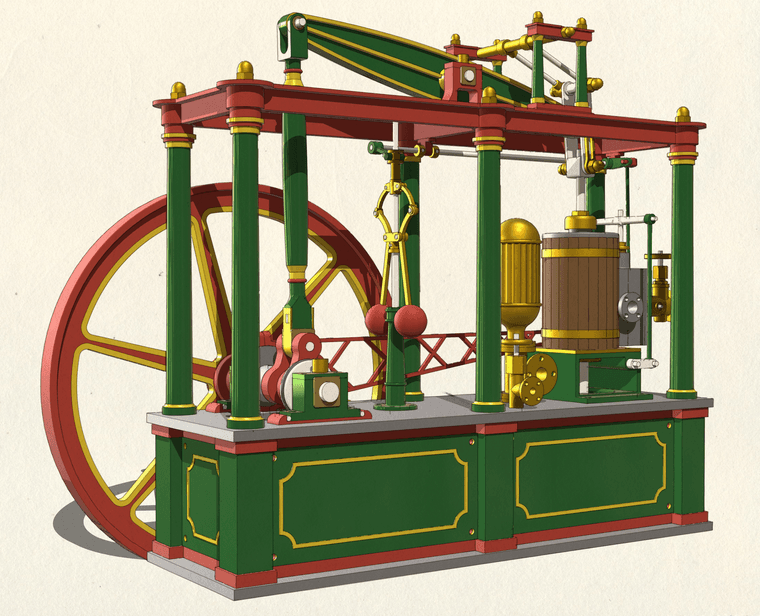
This one is called Lady Stephanie. I don't know who the real Lady Stephanie was but if she was anything like this engine, I'm guessing she was kind of ornery and hard to please.
After putting her aside I did another engine today. This is a a little crankless engine.
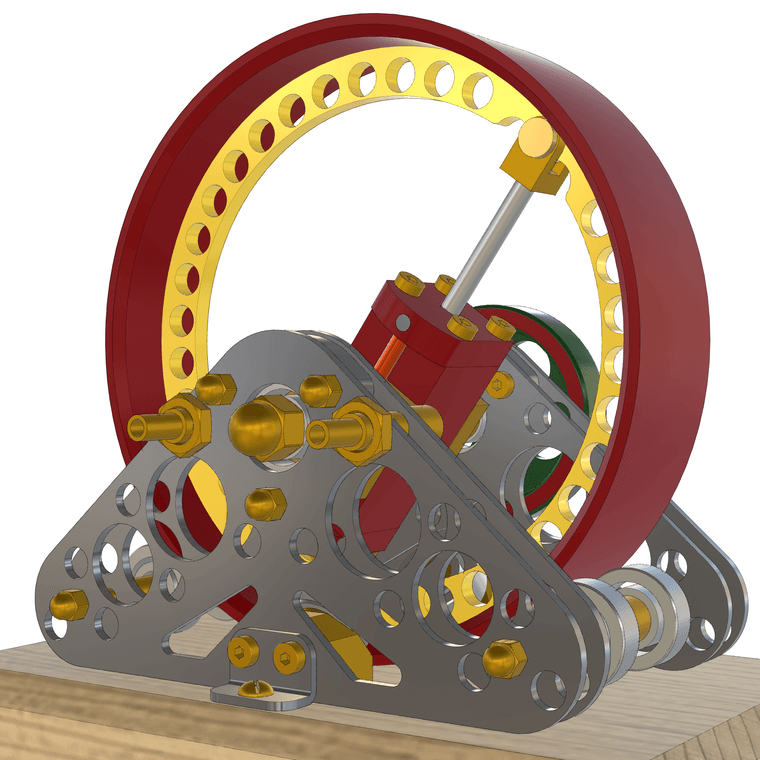
A model of what is probably the first micrometer ever made. It's dated England about 1776 and attributed to James Watt although evidence shows it likely wasn't made by him.
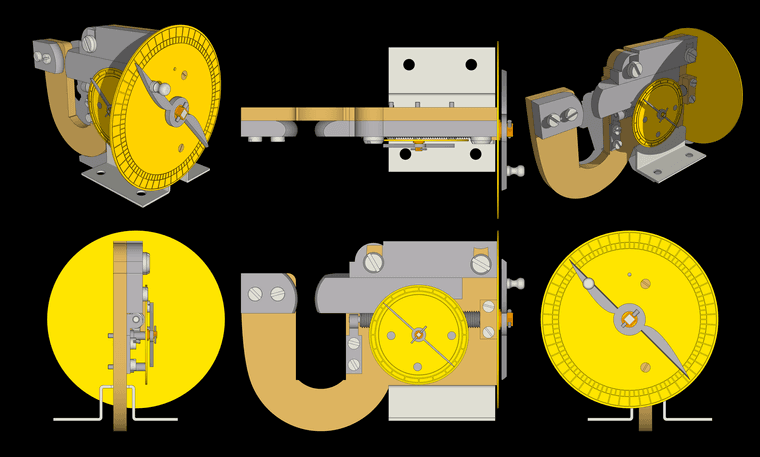
A larger version of this image is available here.
All the screws are made and holes threaded. 28 component definitions, all solids.
Funny guys!
And here's another one. A little 4-cylinder oscillating engine. As usual, all base level components are solids.
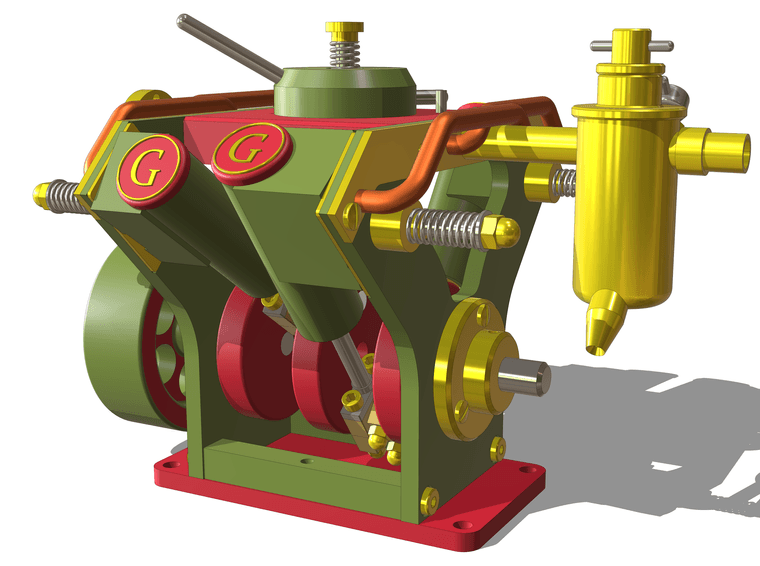
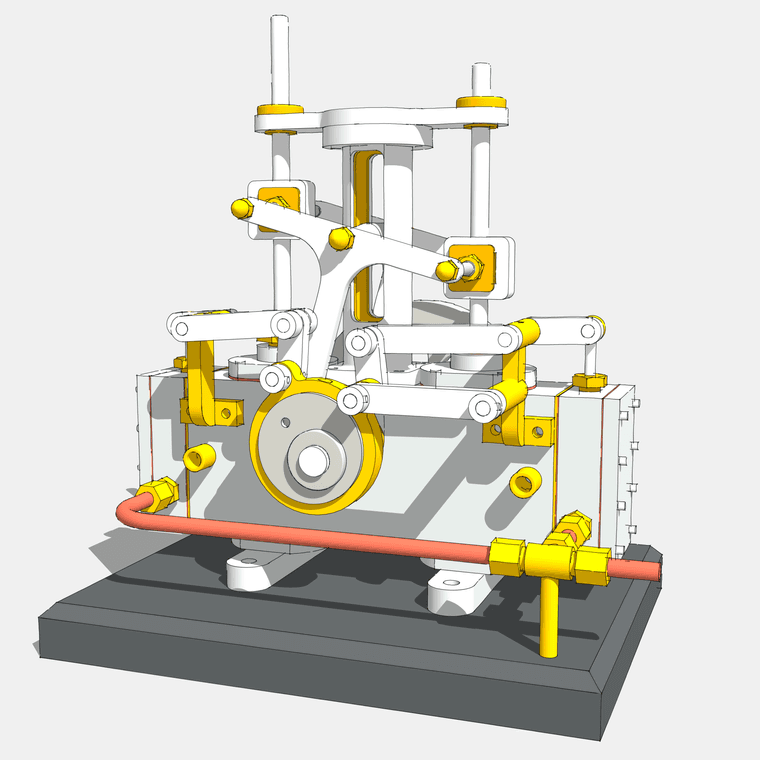
A machinist's model of a twin cylinder steam engine designed by Joseph Bernays in the 1870's. The original was displayed in Paris at the Universal Exposition of 1878.
@HornOxx I'd have a difficult time making one of those legs out of real wood by hand. Getting four to match? Not likely.
@FlorinAp reading through this thread, it hasn't worked for more than a decade. The author indicated that on 21 June, 2014. It would appear that the author has, for whatever reason, not continued to support it.
@Rich-O-Brien said in A Mahogany Lowboy:
In your 20s!
I wish!
@Rich-O-Brien said in A Mahogany Lowboy:
As always its a great example of accurate modelling.
Thank you very much!
This is from a model I initially made 11 years ago for shop drawings. I pulled it out recently to do a bit of refining in SU2025.

It's not difficult to adjust a texture to fit a face using the native tools. Is it OK if the texture is distorted in the process of making it fit?
Toolbar placement has nothing to do with templates. The toolbar positions and visibility states are saved in PrivatePreferences.json in your User/AppData/Local/SketchUp/SketchUp2025/SketchUp folder. AppData is normally a hidden folder. Make hidden folders visible in File Explorer. Then go to that folder and delete the .json file. Reboot your computer and then open SketchUp and set up your toolbars. Open a model file and save it. Then close SketchUp and open it again and see if the toolbar placement has remained.
I would suggest before you do the above that you remove that license and then sign in with your subscription license instead.
After you made the modifications did you select Save as Temaple? If not you aren't saving a template. You are just saving a SketchUp file like any other SketchUp model you might create. In order to have the changes show you need touse Save as Template so it ends up in the Templates folder.
@ximcix said in No context menu fo clothworks.:
but no context menu when I right-click on a bare surface (not a group or a component).
@ximcix said in No context menu fo clothworks.:
Any suggestions?
Read the instructions.

3D SketchUp Community for Design and Engineering Professionals.
(sketchucation.com)
You need to have groups or components for the cloth and collider for Clothworks to work on.
There's no reason fo Clothworks to appear in the context menu if you are right clicking on a face since the extension doesn't work on that context.
Advertisement